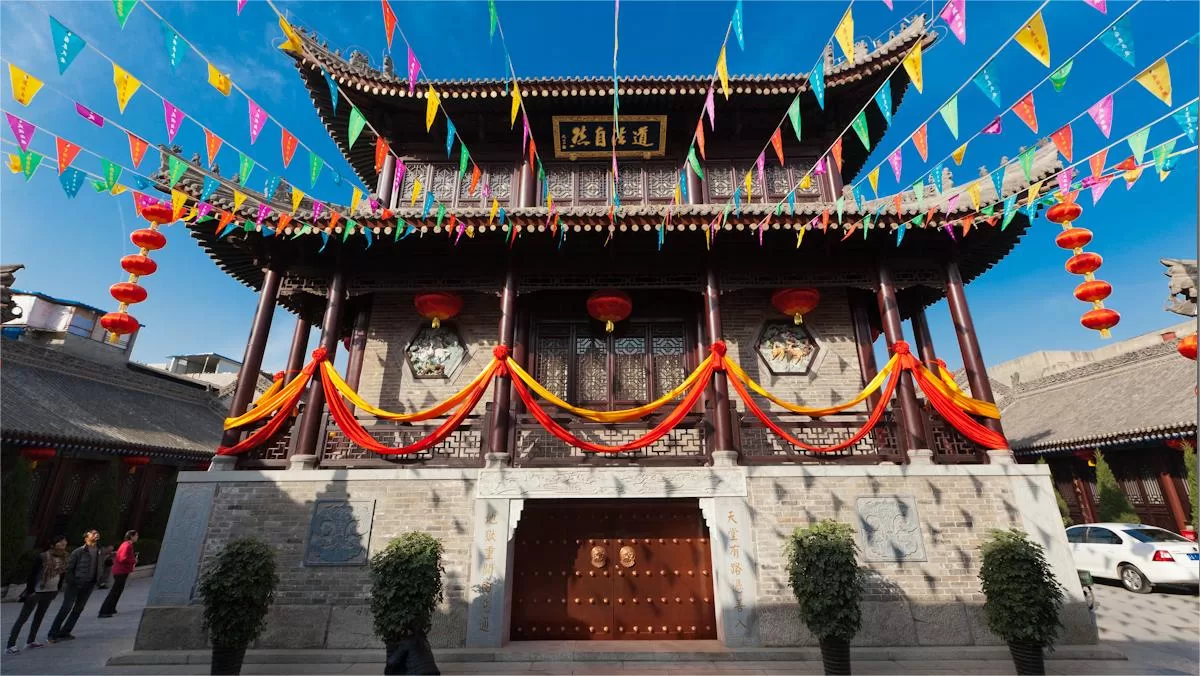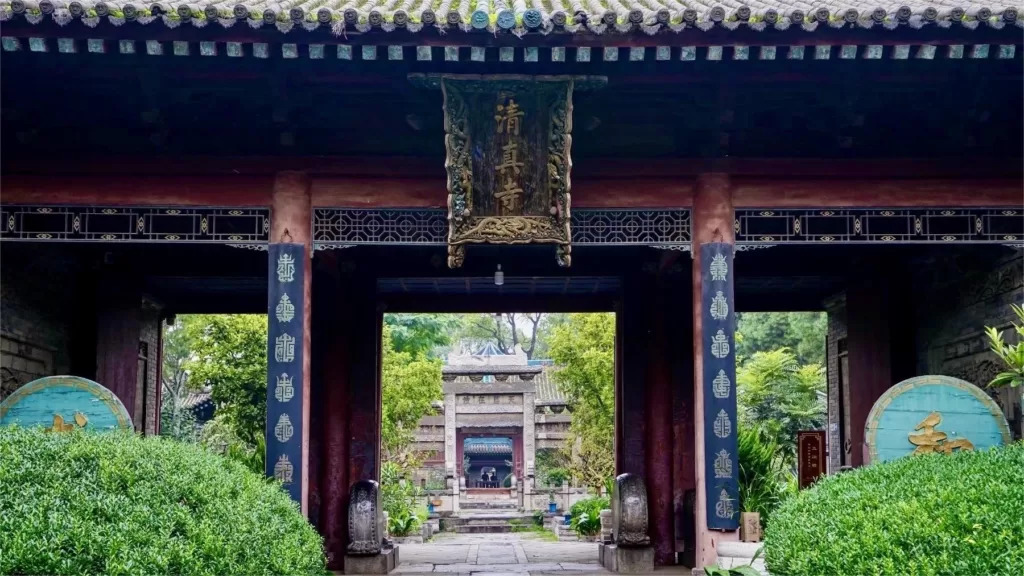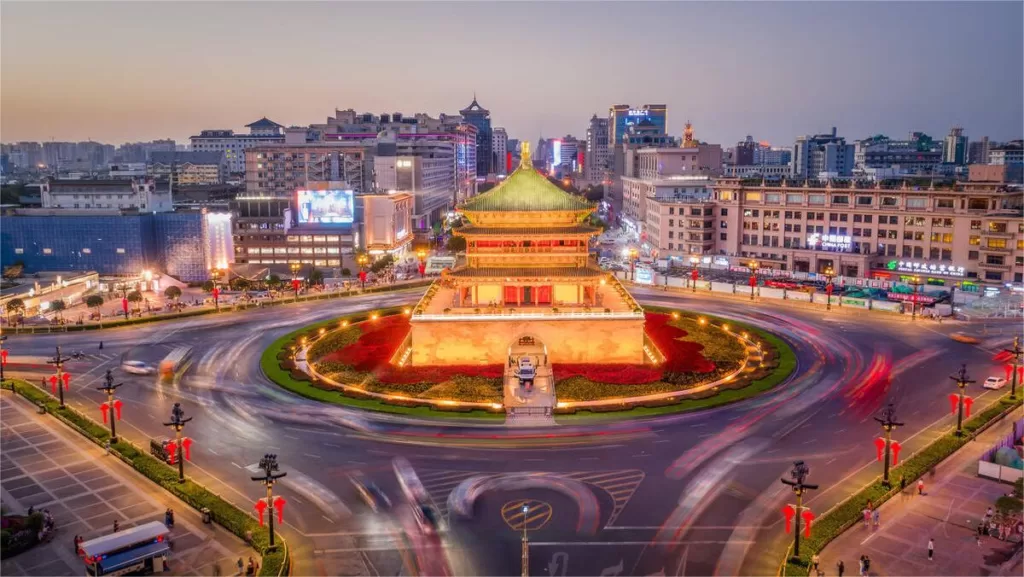The City God Temple in Xi’an (西安城隍庙, Chenghuang Temple) is a significant Taoist religious site and one of China’s three major City God Temples. Its history dates back to the Ming Dynasty, with its original construction in the 20th year of the Hongwu era (1387). It was later relocated to its present location in the 8th year of the Xuande era (1432). The temple served as the leader of City Gods over several provinces in the northwest, hence its name “都城隍庙” (Governor of City God Temples, Duchenghuang Temple). Its ancient architecture, ornate decorations, and cultural significance make it a site of great historical and artistic value, offering a window into the rich tapestry of Xi’an’s past and its enduring connection to tradition and faith.
Table of Contents
- Basic Information
- Location and Transportation
- Highlights of the City God Temple
- Vlog about Xi’an City God Temple
- Useful Tips Summarized from Reviews
- Attractions Near City God Temple
Basic Information
| Estimated Length of Tour | About 1 hour |
| Opening Hours | 8.30 – 17.30 throughout the year |
| Ticket Price | Free |
Location and Transportation
The City God Temple in Xi’an is located at No. 129 West Avenue, Lianhu District, in the heart of the city’s historic Muslim Quarter. The temple is easily accessible by public transportation, with several bus stops and a metro station located nearby.
Bus: Take bus 4, 15, 23, 31, 43, 45, 201, 215, 221, 222, 252, 286, 300, 407, 604, 611, 612, or 622, get off at Qiaozikou Stop (桥梓口), walk about 150 meters to the east to reach the temple.
Subway: Take subway line 6, get off at Guangjijie Station (广济街站), and walk about 100 meters to the west to reach the temple.
Highlights of the City God Temple
Traditional Architecture

The City God Temple in Xi’an boasts numerous historical buildings, with the main hall being particularly prominent. It spans five bays in width, with a total width of 34.5 meters, and three bays in depth, with a total depth of 15.7 meters. Surrounding it is a cloister adorned with intricate carvings of combs, mythical beasts, and elephants. Originally placed in front of the hall were a pair of bronze lions cast during the Jiaqing reign of the Ming Dynasty (1522-1566). They are now located at the entrance of the Xi’an Beilin Museum. The Le Wu Lou, a theater stage, is situated on a raised brick platform with a roof covered in glazed tiles, featuring decorative ridge ornaments. The unique design and delicate craftsmanship make it a beautiful and complex structure.
Cultural Significance

The City God Temple in Xi’an is the largest and highest-ranked ancient architectural complex preserved in Shaanxi Province, both in terms of scale and historical significance. The main hall, constructed over five to six centuries ago, still retains the structural characteristics of Ming Dynasty architecture, despite roof renovations during the Qing Dynasty. This makes it an invaluable resource for studying Ming Dynasty architecture in the Xi’an region. Additionally, the temple houses a wealth of colorful paintings and intricate wood carvings, which are considered precious treasures due to their exquisite patterns and fine craftsmanship.
Food Street

The food street near the Xi’an City God Temple is a bustling hub of street food vendors, restaurants, and local eateries. It offers a diverse range of dishes, from traditional Shaanxi cuisine to popular street food snacks. One of the most popular dishes is the famous Xi’an Roujiamo, a type of sandwich made with meat and flatbread. Other must-try foods include Yangrou Paomo, a lamb soup with crumbled flatbread, and Liangpi, a cold noodle dish served with a spicy sauce. Visitors can also sample a variety of sweet treats, such as Tanghulu, a type of candied fruit skewer, and Zongzi, a glutinous rice dumpling filled with sweet or savory ingredients.
Vlog about Xi’an City God Temple
Useful Tips Summarized from Reviews
Historical Significance: The City God Temple in Xi’an is dedicated to Ji Xin, a prominent general under Liu Bang. According to local folklore, Ji Xin sacrificed himself to save Liu Bang from being captured by Xiang Yu, diverting Xiang Yu’s attention and allowing Liu Bang to escape safely.
Marketplace: The City God Temple area has been historically known as a bustling marketplace. It is said that you can find everything from luxurious silk fabrics to everyday items like cattle cages and horse whips. While online shopping has become popular, many locals still prefer to visit the City God Temple area to purchase small trinkets and souvenirs.
Architectural Features: At the entrance, you’ll encounter a large wooden structure that retains characteristics of Ming Dynasty architecture. The interior walls are adorned with exquisite colorful paintings, showcasing traditional Chinese artistry. Take your time to admire these details during your visit.







The City God Temple (都城隍庙) in Xi’an does not charge an entrance fee. Outside, there is a market with many shops selling incense. The whole visit takes about an hour. After visiting the City God Temple, you can walk for a few minutes and arrive at the Muslim Street (回民街), which is very convenient.